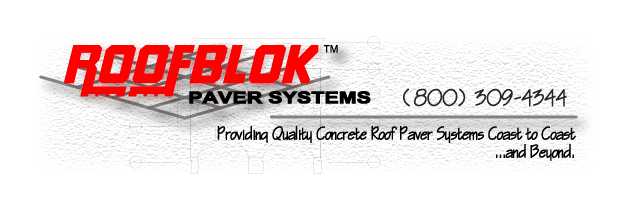|
|
 |
|
|
Proper ballast selection for wind
uplift resistance is a complex procedure involving the determination of the
rooftop wind speed based on: the
local wind speed, air temperature and pressure, gust factors, ground conditions,
and building and parapet height.
|
|
In order to simplify this,
ROOFBLOK has developed criteria that enables the designer to establish the
rooftop wind speed (VR) with only three variables:
|
|
|
|
|
|
|
|
|
1. The Basic Wind Speed (VO) at ground level (See Figure
1) |
|
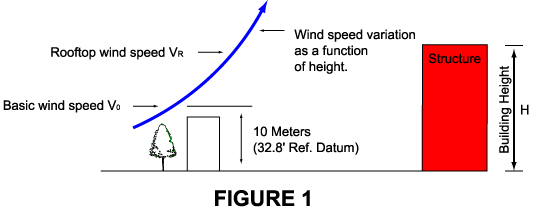 |
|
Basic Wind Speed:
The basic wind speed may be determined by several methods including the
ANSI 100-Year wind map (Figure 3). Research
by ROOFBLOK into the local storm conditions of various locations in the United
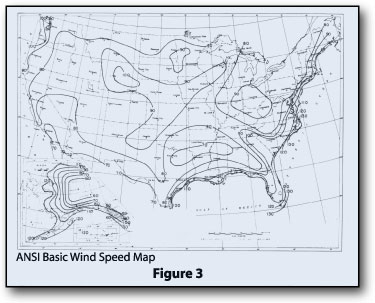 States indicates that the 50 and 100 year storm conditions for a given locality
are, in fact, exceeded by 10 to 15 percent in approximately 80% of the cases
analyzed. Consequently, ROOFBLOK
encourages the designer to select the design wind speed at ground level from
either the 100 year criteria or an analysis of local wind
conditions, whichever is higher. States indicates that the 50 and 100 year storm conditions for a given locality
are, in fact, exceeded by 10 to 15 percent in approximately 80% of the cases
analyzed. Consequently, ROOFBLOK
encourages the designer to select the design wind speed at ground level from
either the 100 year criteria or an analysis of local wind
conditions, whichever is higher.
|
|
|
|
|
|
|
|
2.
The Ground Terrain within
1/2 mile of the site (Table 1 and Figure 2). |
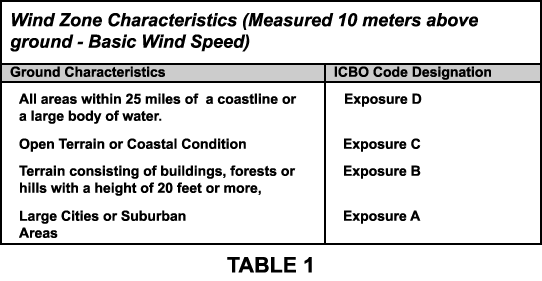
The Ground Terrain:
The topography and height of building within 1/2 mile of the proposed
structure must be identified. For
simplicity, 4 zones are generally utilized to depict the exposure coefficient of
a building. From Table 1 and
Figure
2, select the ground characteristics which best describes the proposed
structure. The designer can now
reasonably select the proper wind zone and designated wind exposure as depicted
in the Uniform Building Code. If
designing in a central area of large cities (Exposure A), ROOFBLOK should
be consulted due to complexity of wind on high-rise buildings and wind tunneling
effects on lower buildings.
|
|
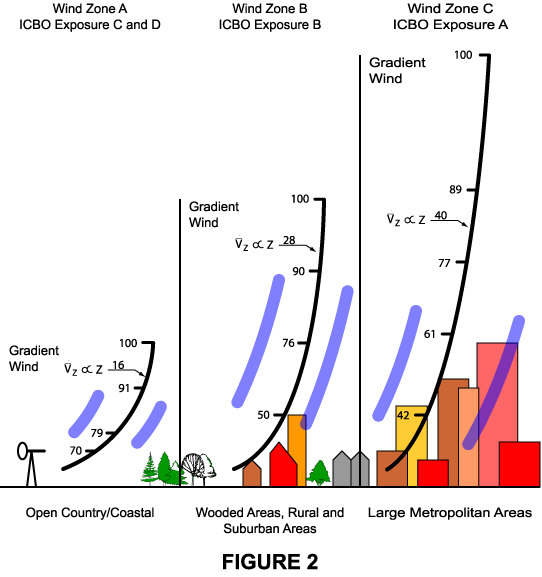 |
|
|
|
|
3.
Building
Height.
|
| The Building Height:
The building height is the distance from the ground level to the top of
the parapet. If a building is
located on a hill, the elevation of the hill should be added to the height of
the building for proper wind design. |
|
|
|
